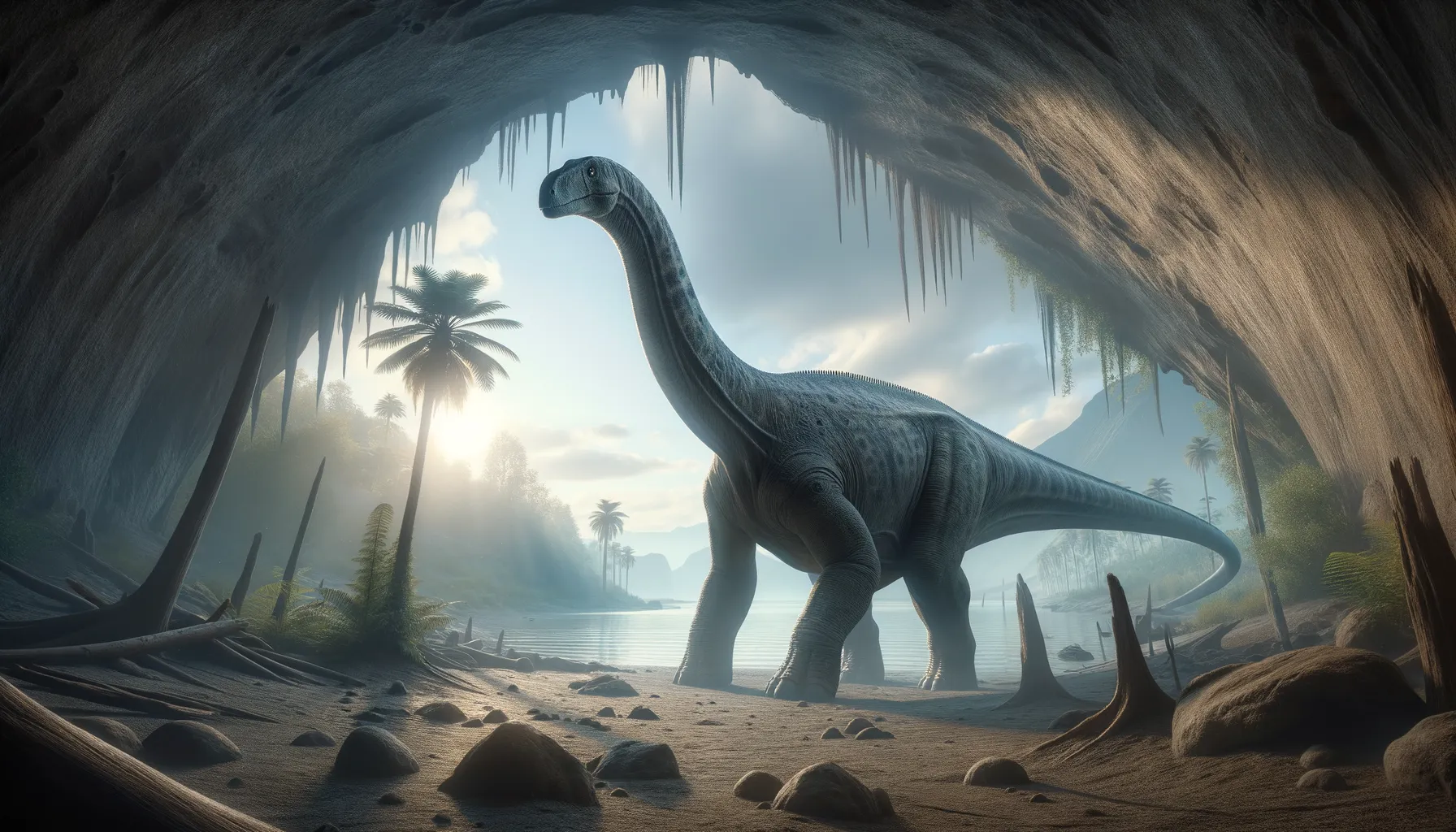
Cetiosauriscus
Sauropod giant of the Jurassic era.
Period
Jurassic
Length
Approximately 15 meters long.
Height
Around 4 to 5 meters tall.
Weight
Estimated at several tons.
Cetiosauriscus was a large herbivorous dinosaur that roamed the earth during the Jurassic period. Exhibiting typical sauropod features, it had a long neck and tail, aiding in its growth to considerable lengths. Discovered initially in England, this species has since sparked interest in understanding more about the evolution of sauropods and their ecological roles during their time.
Diet
Cetiosauriscus relied heavily on a herbivorous diet, consuming vast amounts of vegetation. Its long neck allowed it to reach high plants and trees, giving it access to abundant food sources.
Hunting
Being a herbivore, Cetiosauriscus did not engage in hunting behaviors. Instead, it foraged for foliage, likely moving in groups to find substantial food sources. Its size offered defense against predators.
Environmental challenges
Cetiosauriscus had to navigate changing landscapes due to tectonic shifts in the Jurassic period. Fluctuating climate and the emergence of new plant species posed both challenges and opportunities for survival. Predation from large carnivores necessitated defensive adaptations.
Speed
Likely slow-moving due to its large size.
Lifespan
Could live several decades.
First discovery
Discovered in England in the early 20th century.
Fun Facts
- Cetiosauriscus lived during the Middle Jurassic period, around 166 million years ago.
- Its name means 'whale lizard-like', reflecting its initial mistaken identification as a giant sea creature.
- Cetiosauriscus was a long-necked dinosaur, similar to other sauropods like Brachiosaurus and Diplodocus.
- Fossils of Cetiosauriscus have been found in England, hinting at its European habitat during its time.
- Unlike some dinosaurs, Cetiosauriscus had a relatively slender build, allowing it to move more gracefully.
- The creature measured up to about 50 feet long, making it one of the more modestly sized sauropods.
- Cetiosauriscus is part of the family that includes some of the largest animals to have ever walked the Earth.
Growth and Development
With a long developmental period, Cetiosauriscus experienced rapid growth to avoid predation when young. Its skeletal structure indicates continued growth throughout its life. Proper nutrition was essential for maintaining its massive size.
Habitat
Cetiosauriscus thrived in lush, forested environments with ample vegetation. It likely inhabited riverbanks and floodplains, which provided food and water. Its habitat would have been shared with other large herbivores and predators.
Interaction with other species
Cetiosauriscus likely coexisted with other sauropods, competing for food resources. Predator-prey relationships involved defending against large carnivorous dinosaurs. It may have developed mutualistic relationships with smaller species that helped remove parasites.
Natural lifespan
The natural lifespan likely extended to several decades.
Reproduction
Reproduction was oviparous, with eggs laid in nests. Fossil evidence suggests parental care during the early stages of development. The young required years of growth to reach full maturity.
Social behaviour
Cetiosauriscus may have exhibited herding behavior, which provided protection and increased foraging efficiency. Communication could have been achieved through body language and low-frequency sounds.
Fossil locations
Fossils have been primarily found in the United Kingdom, specifically in the Oxford Clay Formation. These discoveries have been crucial in understanding sauropod diversity in the Jurassic period. No significant finds outside of these locales have been documented.
